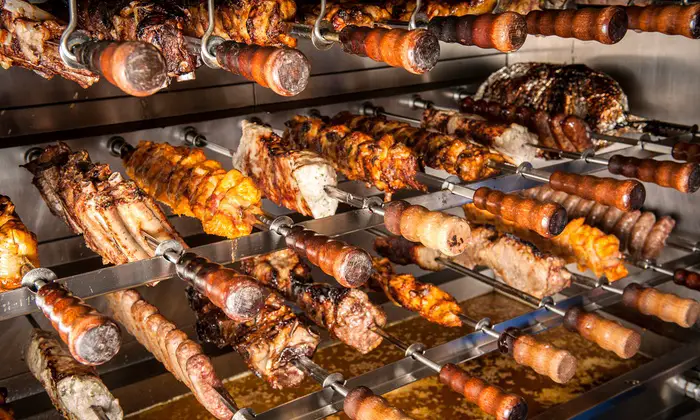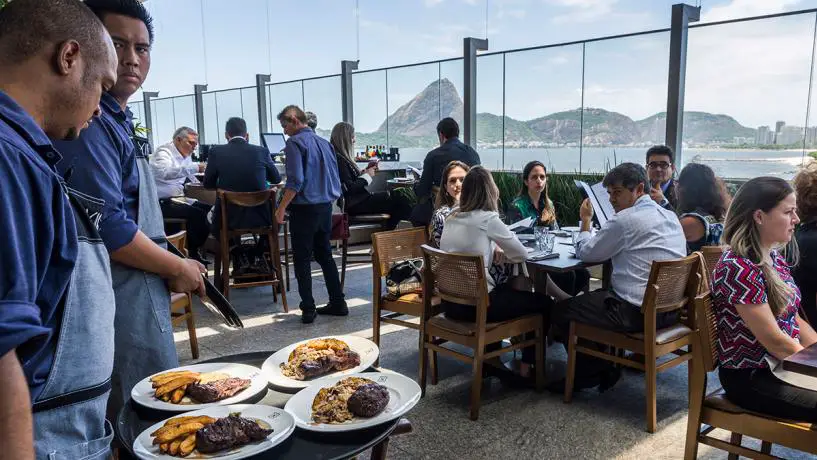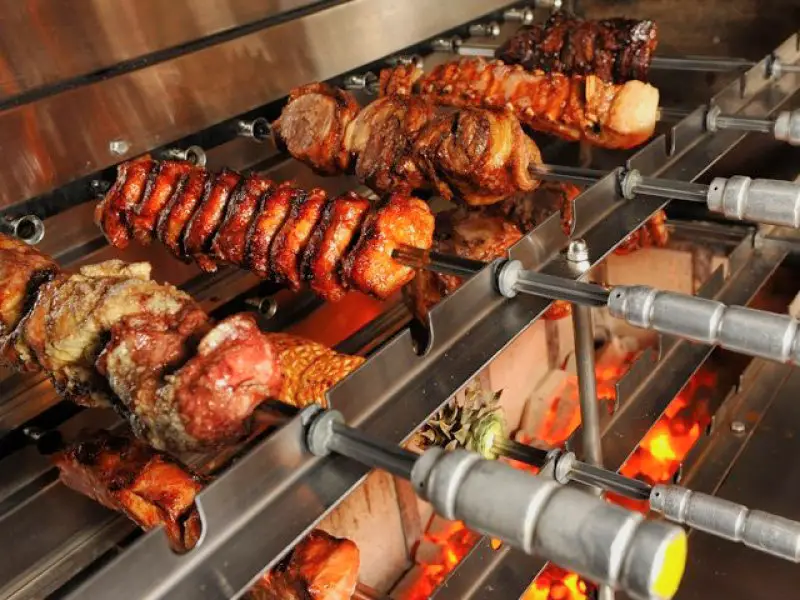Brazil’s Barbecues Go Global
Introduced to Brazil by the gauchos (Brazilian cowboys), sometime back in the 1500s, and now an established Brazilian addiction, Churrascos (pronounced shoo-haas-koh) seem to be catching on.
They’re popping up around the globe, and in places you would least expect to find them like Australia, Korea, Japan, Thailand, Germany, England, Poland, and Sweden. In Canada and the US interest is also growing. There are chains Fogo de Chao in the US or restaurants like the Samba Brazilian Steakhouse in Vancouver or Garden Grill in Shekou, China.
Why all the fuss?
It might be a global interest in the culture of Brazil, the food, people, customs and music – which, if condensed into a restaurant situation, create a wonderful, and very unique dining experience.
The rodizio format which literally means “all you can eat”, is obviously a big lure.

As is, the range of barbecued meats include pork (Porco), beef (Bife), chicken (Frango), goat (Cabrito), and not to forget the very special galinha do coracao, or chicken hearts and linguica (a spicy Brazilian sausage). All are cut straight from the skewer with large butchers knives, directly onto your plate.
If you haven’t tried barbequed chicken hearts before, close your eyes, and give one a chew. They’re considered a special treat in Brazil, and are surprisingly tasty.
Meat preparation is simple. In Brazilian Churrascarias, the meats are smothered in sea salt (sal grosso), or garlic (ahlo), and slowly cooked over burning embers. Various marinades can be added as desired.
Many homes in Brazil, including apartment blocks, have in-built churrascos made of brick, and some of which are handsomely tiled.
The beauty of the churrasco is that the skewer can be returned to the oven, and put in a different position depending on the level of cooking required. It can also be left for longer periods, without attention, as the heat source is generally 3 or 4 feet away. So, it’s very chef friendly.
You won’t find a grill on a Brazilian churrasco, so, it’s not possible to cook minced meat, or fry an egg, but that’s about the only downside.
Unlike a western barbecue, it’s possible to cook larger cuts of meat, a whole chicken, a tenderloin, or pork belly, all at the same time. And because it’s such a slow cooking process, the meat is cooked as you like it, and the flavours have plenty of time to develop. It’s also easier to cater for large numbers. Just put another spit in the oven.
Popular sides include green salads, a potato salad (with carrots) generously laden with mayonnaise, and a tomato and heart of palm salad simply dressed with olive oil. Bean, beetroot, and chickpea salads, are also popular.
Accompaniments include garlic sauce, pimenta sauce, olive oil and limes.
The chicken and pork tastes great dredged in forafa, drizzled with a little olive oil, and a squeeze or two of lime juice. Another popular idea is to dredge the meat in forafa, and return it to the churrasco. Then the forafa is left to form a slightly crunchy exterior. Mmmmm.

They offer many advantages for a restaurateur. There’s no need for a chef, when a keen cook will do equally well. There’s little waste. Hardly any prep. It’s easy to cater for groups. Service is fast. It’s easy to turn the tables over two or three times a night. The customers are stuffed, and happy. It all adds up to profit doesn’t it?

It’s not a matter of where, but when. Time is precious and my time spent living and experience the cultures of this world is what I lust for. This is why I created this website, to share true, genuine experiences and not just typical touristy info. Travel, the love of coffee, and food!
